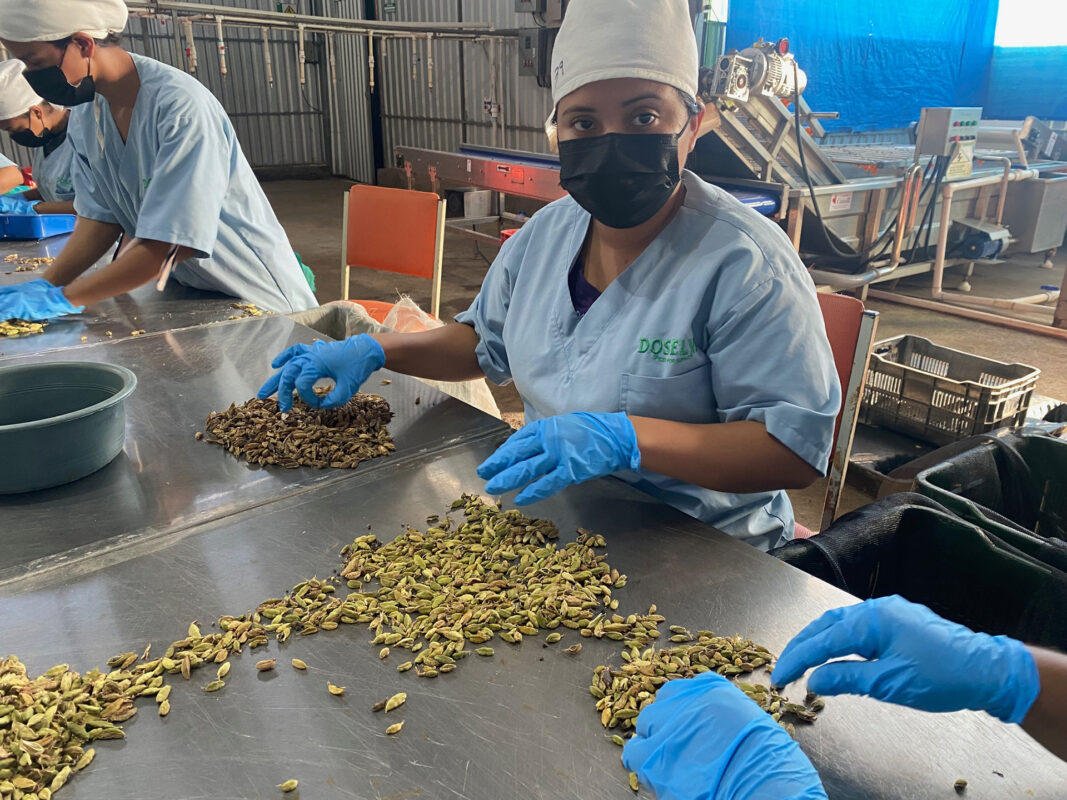Growing up in India, I used to choose green cardamom capsules from all sweet or zingy dishes that my mother puts them in. I exposed my tongue when I bit into the seeds, hoping that the acute taste of eucalyptus would disappear. The circles had a special place in my mother’s Caddy. She used them generously on desserts, which she did at festivals and religious holidays, and crushed pods in her mortar and a pestle to diversify the chai, which she created for guests at home from time to time. It took me some time to appreciate the elaborate mix of sweet, zingy, pine, citrus, floral notes and aromas packed in pods that combine to season a versatile.
The term cardamom refers to plants of two types, Cardamomum Electoriagreen cardamom and Amomum sub -secondaryBlack cardamom. They are part of the ginger family and are recognized by their spindles with petite black seeds and a characteristic aroma. Black cardamom comes from the Himalayas and cultivated in Nepal, India and Bhutan. The beginnings of green cardamom lie in the forests of south -western regions of India and is currently intensively grown in Central America (Guatemala, Nicaragua, Honduras), Sri Lanka and Tanzania. This is the third most high-priced spice in the world, after saffron and vanilla.
Like other spices, green cardamom is no longer grown only where it comes. Due to changes in agricultural technology and global demand on the market, the cardamom is currently bred in non -family areas, which more or less match the climate in which it can develop. In this way, we see how spices trading and its historic influence of world history still affect the state-of-the-art world.
The demand for their forceful flavors, elaborate aromas and vivid colors between the oceans have transformed every kitchen affected by spices. Importing of spices is impossible to separate from searching for wealth through colonization. Spices were not used only to feed culinary appetite. They have long had healing value in the treatment of diseases and have been included in cosmetics, perfumes and aromas, often burned as incense for religious rituals.
They became symbols of the status used by the elite to show their wealth and were a way for the ruling class to win with their wealth and were often consumed in an effective way. Long before Portuguese, Dutch and English came inside, between India, China and the Islands of Southeast Asia, there was a flowering trade in spices.
After the cardamom, I learned on the spices about his countless kitchens and non -clipping applications. Antique Ayurvedic texts show the healing apply of cardamom to aid digest and alleviate cough and frigid, while the Greeks and Romans used their volatile ingredients for the production of perfumes and oils. It is believed that from the evergreen forests in the southern state of Kerala in India, the cardamom, traveled trade routes established by Mediterranean merchants and later European colonizers. This was adopted by Persian, Arabian, Middle East, North Africa and Scandinavian.
Although he was once considered petite forest crops, the growing popularity and the demand for cardamom led to the establishment of a plantation in Kerala in southern India, Tamil Nadu and Karnatak pockets and Sri Lance. In 1914, the German owner of the Oscar plantation Majus Kloeffer planted a green cardamom from Kerala in his coffee estate in Cobán, Guatemala, where it bloomed in a chilly, damp climate and high altitudes in the mountains of Alta Verapaz. In the seventies, Guatemala ended the cardamom monopoly in India and became a leading exporter of crops, and from 2000 the country was the world’s best producer of green cardamom.
Other Central American countries, such as Nicaragua and Honduras, offer Guatemalan a similar atmosphere for growing cardamom. In the northwestern Honduras, the featherlight soil of cloud forests Santa Barbara enabled the cardamom to become part of the fresh trade in the spices of the region. While crops such as cardamom are fresh in Honduras, coffee is the basic cash cultivation and the source of income for most farmers. However, climate change caused variable weather patterns, which hinders farmers to predict or maintain seasonal collections, quality of crop and market prices.
Many coffee breeders in Latin America begin to supplement or completely switch to crops, which generate constant income and aid improve soil quality, are less susceptible to diseases and augment yields. My daily work applies to the company Don teaAnd we acquire Our cardamom From Don Jesús Gutiérrez in Trinidada, Santa Barbara, Honduras. Don bought 60% of his first collections, grinding all cardamom seeds at the Don headquarters in Brooklyn to brew tea concentrates and mix with loose leaf teas.
His history illustrates a wider trend. Gutiérrez, an experienced coffee breeder, decided to diversify his crops with cardamom after rust of coffee leaves, and price instability threatened his ability to grow. Now, wood and bananas are a cardamom that cultivates. Created next to fruit trees, cardamom capsules develop more fruity flavors and more pronounced aromas. Agrolestra’s cultivation is also used for sustainable spice production. Forest covering is a canopy that shades plants on the forest floor and adds organic matter to the soil. Gutiérrez cultivates the Jumbo variety of cardamom, which has larger seeds compared to other varieties. After collecting the cardamom capsule is 85% water, scales and several seeds. After drying, the water is extracted, and the capsule is reduced to the rib scale completely seals the seeds inside. Cardamom circles are collected manually and undergo the oven drying process for 26-36 hours. Balmy air is blown up in the drying chamber to eliminate dirt, after which the pods are ready and spotless to the packaging.

In many respects, it reminds that specialist coffee has done to create a direct relationship between consumers focused on quality and coffee producers: people know where their coffee comes from and that they enjoy fresh. Working with a farmer – in this case a cardamom farmer – modernist companies of spices and teas are able to ensure that tough work related to cultivation is paid honestly, while shortening the supply chain, maintaining transparency and identification of this amazing spice.
Preparing to organize every tasting of tea, I set off in a cardamom in a petite dish, to which people can look and a snack. Eating seeds is a sensory experience because the aromas fill the lips slowly releasing a mixture of floral, citrus and zingy notes. After chewing seeds, the taste becomes more concentrated, pepper and mint with subtle earthly. There are so many stories and taste in these petite pods – and we can learn much more.
